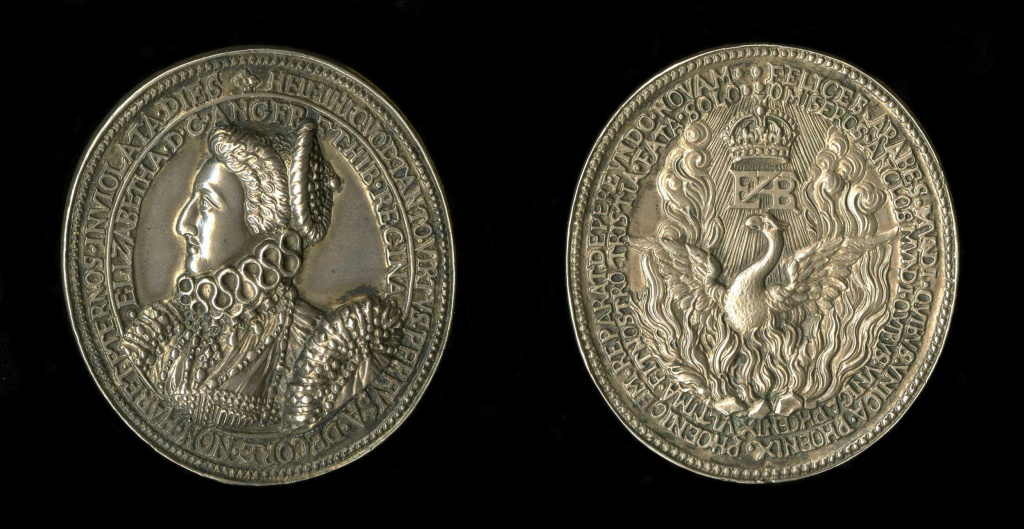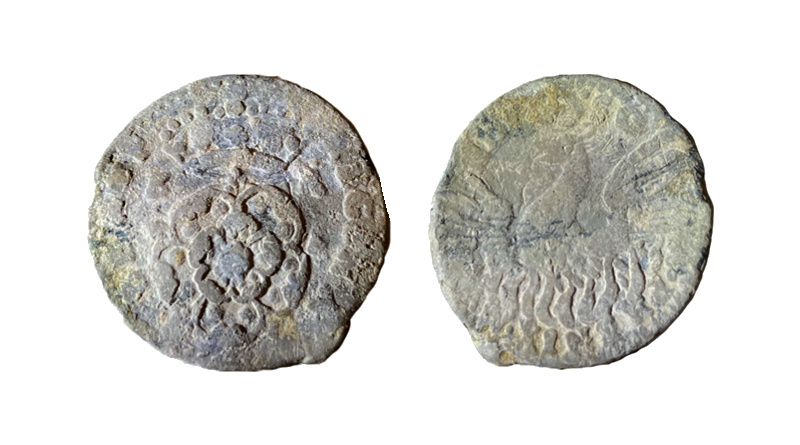PAS Finds – Phoenix medal
PAS Finds – Phoenix medal
My selection of the detecting finds recorded at the PAS in the week ended 27 January 2023
Featured Find
Elizabeth I Phoenix medal
A lead alloy Phoenix medal of Elizabeth I. It is a Find of Note of County Importance. On the obverse is a crowned Tudor double rose with an “E” and “R” to the left and right. The legend reads “REGINA BEATY” – Blessed Queen. On the reverse is a crowned phoenix with outspread wings and the legend SOLA PHENIX MVNDYE – alone the phoenix of the world
There are various theories as to what this might be for and when it was produced; it is referred to as a token or counter in some sources. The consensus for the most likely theory is that it is a memorial token produced shortly after the death of Elizabeth I in 1603.
Symbolism of Elizabeth I
The use of emblematic symbols flourished in continental Europe in the 1530s with the publication of books dedicated to their meaning; moral, political and religious. At the start of Elizabeth’s reign books such as Claude Paradin’s Devises heroiques were published in England and exercised an enormous influence on literature and in particular the visual arts.

Elizabeth I’s image makers wanted to gain popularity after Mary I’s Catholic marriage and unpopular reign and assert her authority as a solitary female monarch with a divine right to rule. Other messaging such as her virginity and chastity were also important.
Hence, symbols such as the Rose, Star, Moon, Ermine, Pearl, Pelican (as in this portrait) and the phoenix all appear in portraits of the Queen.
Phoenix
The phoenix appears in the 1557 edition of Devises Heroiques with the mottos “Unica Revivisco” – I alone come back to life and “Unica Semper Avis” – Always only one bird. Along with being essentially female, the phoenix represented a unique beauty and authority, an association with chastity and the ability to triumph over adversity and immortality. The phoenix was also used to represent persecuted Protestants who had survived the threat of public burnings.
All these attributes worked well for Elizabeth; as there could only be one phoenix, there could be only one Queen of England. She had triumphed over death, whether smallpox or assassination conspiracies and she wished to portray her reign as steadfast and unchanging.
Elizabeth selected the phoenix as her personal device from the start of her reign. The legend on her accession medal read “Sola phoenix omnia mundi et Angliae gloria” – Alone the phoenix, above all, is the glory of the world and of England.

Photo: © The Trustees of the British Museum CC BY-NC-SA 4.0
As shown here, medals produced later in her reign would also feature the phoenix.
Phoenix to Jamestown
As a little footnote, a couple of these medals were found in Jamestown, Virginia and there is even the suggestion that they may have arrived at Jamestown in April 1608 aboard the resupply ship named Phoenix.




